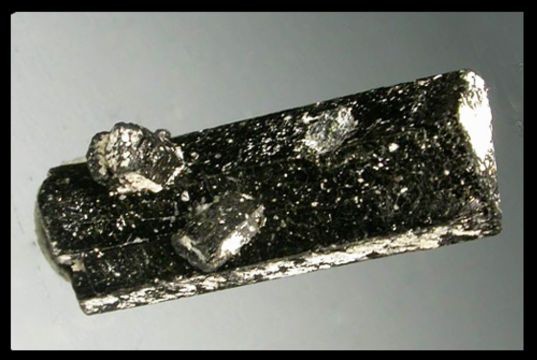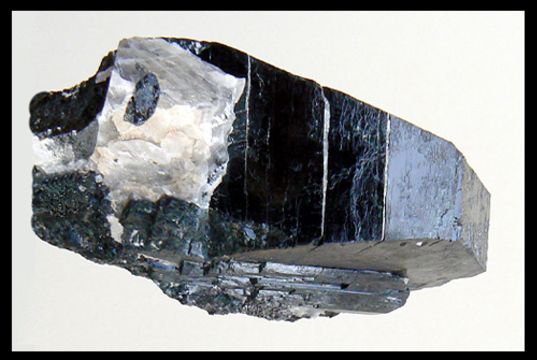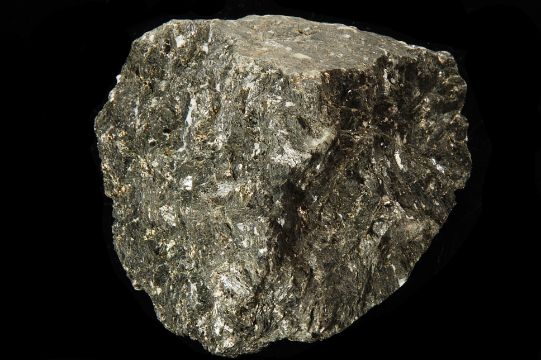Hornblende – Mineral and Healing Properties
Chemistry: (Ca,Na)2-3(Mg,Fe,Al)5(Al,Si)8O22(OH,F)2.
Class: Solicates
Subclass: Inosilicates
Uses: Decorative material
Hornblende is a complex in silicate series of minerals (ferrohornblende magnesiohornblende). Hornblende is an isomorphous mixture of three molecules; a calcium-iron-magnesium silicate, an aluminum-iron-magnesium silicate, and an iron-magnesium silicate.



Origin Of The Name
The word hornblende is derived from the German horn and blenden, to ‘deceive’ in allusion to its similarity in appearance to metal bearing ore minerals.
Interesting Facts
Amphibolite was a favourite material for the production of adzes in the central European early Neolithic (Linearbandkeramic and R”ssen cultures). In the VSG, it was used to produce bracelets as well.
Where Is It Found
Anywhere that you may be able to find igneous or metamorphic rocks, you can also find hornblende. It is the mineral that gives these rocks their green or black color.
What Do We Do With It
Horneblende is a common dimension stone used in construction, paving, facing of buildings, etcetera especially because of its attractive textures, dark color, hardness and polishability and its ready availability.
Metaphysical Uses
Hornblende is a powerful root chakra stone. Hornblende, also known as amphibolite, can help when your argumentative side takes over with friends or loved ones. It helps individuals to accept compromise so that all parties can attain resolution. It is a grounding stone and works well with other minerals and humans. Promotes unity and integration. Helps dissipate inner conflict and obsessive strain. Helps cope with contrasts by allowing each aspect its necessary space. Good for the small intestine and kidneys as well as for middle and inner ear problems. It emits a green healing energy. It can help to increase abundance and prosperity. It works well to heal the root chakra.
Physical Characteristics
Color: Black or dark green.
Luster: Dull
Transparency: None
Crystal System: Tetrahedron
Crystal Habits: Hexagonal granular.
Cleavage: Imperfect at 56 and 124 degrees.
Fracture: Uneven
Hardness: 5 to 6
Specific Gravity: 2.9 – 3.4
Streak: Brown to gray
Associated Minerals: Quartz, feldspars, augite, magnetite, micas and many medium grade metamorphic rocks.
Best Field Indicators: Crystal habit, color and cleavage.


